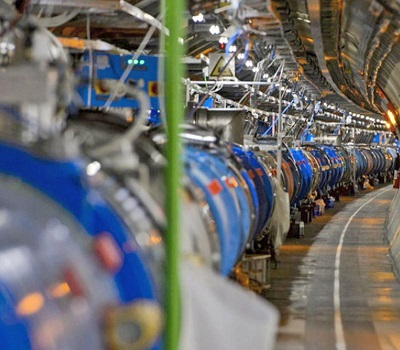Context-
Scientists at the world’s largest physics experiment have made the most precise measurement yet of the top quark, the universe’s heaviest elementary particle. This finding is not just an esoteric detail but has significant implications for our understanding of the universe. The top quark’s high mass implies it interacts most strongly with the Higgs boson, leading physicists to ponder whether our universe might be unstable.
Historical Background
The Greek Philosophical Foundations
The Greek philosopher Empedocles, 2,400 years ago, suggested that matter could be broken down into air, earth, fire, and water. This ancient idea was a precursor to the modern understanding of subatomic particles.
The Particle Zoo
Since the early 20th century, physicists have discovered numerous subatomic particles, forming a complex "particle zoo." These particles have become the focus of contemporary particle physics.
The Top Quark: A Unique Particle
Characteristics and Instability
The top quark is not a smaller particle but an incredibly elusive one. It is the most massive particle known, weighing ten times more than a water molecule, three times as much as a copper atom, and 95% as much as a caffeine molecule. This immense mass makes it highly unstable, decaying into lighter particles in less than 10−25 seconds.
Importance of the Top Quark’s Mass
The mass of a particle is crucial in physics, influenced by multiple sources, including the Higgs field. The Higgs field pervades the universe, and particles interact with it to acquire mass. The top quark, being the heaviest, interacts most strongly with the Higgs boson. By precisely measuring the top quark’s mass, physicists can gain insights into the Higgs boson.
The Higgs Boson and Its Significance
Interaction with the Higgs Field
The Higgs boson is an excitation of the Higgs field, much like how an electron is an excitation of an electron field. The mass of elementary particles, including the top quark, results from their interaction with the Higgs field at specific energy levels.
Curiosity About the Top Quark
Physicists are intrigued by the top quark’s mass because it is close to the Higgs boson’s mass. This similarity is unusual compared to other elementary particles, prompting questions about whether the top quark is an outlier.
The Universe’s Stability
The Energetic Higgs Field
The Higgs boson’s mass is more significant than expected, suggesting that the Higgs field, and therefore the universe, is more energetic than calculations predict. This discrepancy leads physicists to question why the Higgs field has so much energy.
Potential for Cosmic Change
Physicists theorize that the Higgs field, formed at the universe's birth, might one day adjust itself to a more stable state, potentially causing drastic changes. This self-adjustment could involve gaining energy first before losing it, or through quantum tunneling, where the field's energy could tunnel through a barrier to a lower energy state.
Stephen Hawking’s Warning
In 2016, Stephen Hawking suggested that the Higgs boson could lead to the “end of the universe” by destroying atoms of most chemical elements. However, physicists reassured that the frequency of such an event is exceedingly low, approximately 1 in 10100 years.
The Critical Mass of the Higgs Boson
The Higgs boson’s mass of 126 GeV/c2 is finely tuned to keep the universe in its current state. Any deviation could have catastrophic consequences. Understanding the processes contributing to this mass is crucial, and the top quark, being the most massive particle, plays a significant role.
Measuring the Top Quark
Discovery and Initial Measurements
The top quark was discovered in 1995 at the Tevatron particle accelerator in the US, with an initial mass measurement between 151-197 GeV/c2. The Tevatron was shut down in 2011, but data analysis continued, refining the mass to 174.98 GeV/c2 in 2014.
Recent Precision at the LHC
On June 27, physicists at the Large Hadron Collider (LHC) in Europe reported the most precise top quark mass measurement to date: 172.52 GeV/c2. Measuring the top quark’s mass is challenging due to its extremely short lifetime.
Methodology of Measurement
Particle smashers produce an ultra-hot soup of particles, within which top quarks quickly decay into specific lighter particles. Detectors track these decay events, and physicists use the data to reconstruct the top quark’s properties.
Implications and Future Research
Incorporating New Measurements
Researchers will now use the precise top quark mass measurement in calculations to enhance our understanding of the universe's particles. Some will seek even more accurate values.
Potential for New Discoveries
Precisely measuring the top quark’s mass could reveal other particles with similar masses that might be hiding in the data. This ongoing quest could uncover new aspects of particle physics and the universe's fundamental nature.
Conclusion
The pursuit of the Higgs boson’s "best friend," the top quark, is crucial for understanding the universe's stability and the interactions of elementary particles. Precise measurement of the top quark’s mass offers insights into the Higgs field and the fundamental forces shaping our cosmos. This research could reveal other significant particles and refine our understanding of the universe's structure and fate. Each step forward brings us closer to unlocking the universe's deepest mysteries
|
Probable Questions for UPSC Mains Exam-
|
.Source - The Hindu








